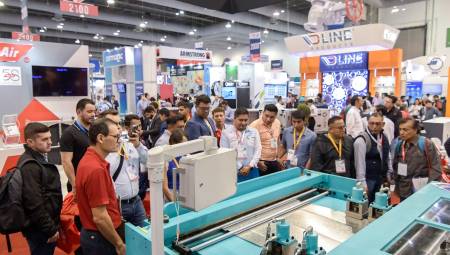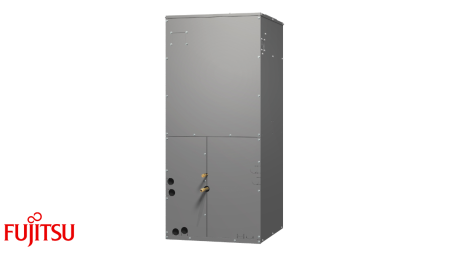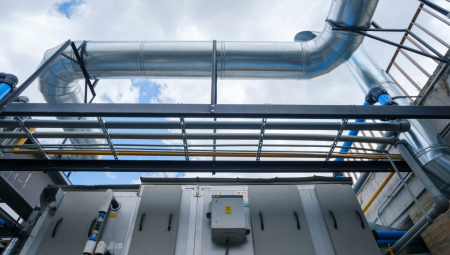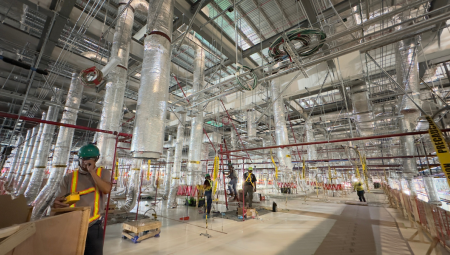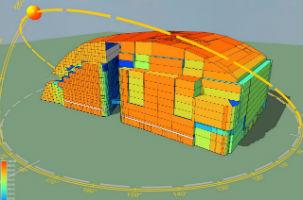 Energy consumption is still a worrying issue when planning the design of a building. There are strategies that allow reducing these consumptions and also make a valuable contribution to the confrot and the environment.
Energy consumption is still a worrying issue when planning the design of a building. There are strategies that allow reducing these consumptions and also make a valuable contribution to the confrot and the environment.
by José Luis Correa*
The energy performance of a building is a critical element in the design of sustainable constructions. There are many energy conservation strategies that allow you to optimize such performance, so knowing how to choose which of these provide greater benefits is a fundamental step in the design process of a project. The energy simulation of buildings responds to these needs, however, its usefulness and application requires a complete knowledge of its characteristics.
The energy efficiency of a building depends on its design. Its shape, orientation, materials and methods of construction, envelope, water management, as well as heating, ventilation and air conditioning (HVAC), and lighting systems, determine the level of efficiency with which the building uses energy. Therefore, the most effective way to optimize energy consumption is using a comprehensive approach in which the building is seen as a total and interconnected whole.
Additionally, the collaboration of all members of the design team from the beginning of the project is also an essential factor. Thus, a holistic vision of each of the participants of the design meetings will be fundamental in the achievement of the sustainability and energy efficiency objectives established by the client.
The LEED sustainable building certification system (an acronym for Leadership in Energy & Environmental Design), recognizes the importance of energy consumption through, mainly, two themes. The first topic is related to prerequisite 2 of the Energy and Atmosphere chapter 'Minimum Energy Performance', which aims to ensure that the designed building, and its systems, have a minimum level of efficiency, in order to reduce the economic and environmental impact associated with the excessive use of energy. The second topic refers to credit 1, of the same chapter, called 'Optimal Energy Performance', which seeks to achieve a level of energy efficiency higher than that required in prerequisite 2; which rewards, awarding the most points that a project can get in a single credit.
These two topics require for their compliance with the total simulation of the designed building and thus demonstrate the energy savings of this with respect to a baseline established in a reference standard. In this way, LEED invites sustainable buildings to achieve higher levels of energy efficiency through the integration of simulation tools into their design processes.
ASHRAE 90.1 is the technical standard, referenced by LEED, that provides the necessary guidelines to meet the energy performance required by this certification. This is an industry standard that provides not only the minimum requirements for the energy-efficient design of commercial buildings, but also establishes the criteria for determining compliance with such requirements.
Projects, seeking LEED certification and following the total building simulation option, can demonstrate improvements in the energy efficiency of their project using the 'Building Performance Assessment Method' detailed in Appendix G of the standard in question. This suggests that the ASHRAE 90.1 standard and energy simulation are strategic allies when designing constructions that are expected to save energy consumption worthy of LEED certification.
A very useful evaluation
Simulation is an art just like a science. The simulation of the energy performance of a building is a powerful computational tool that architects, engineers and builders, among others, must use to evaluate the way in which each system of a building affects the total energy consumption of the same.
The result of such an evaluation is very useful in informing and guiding design decisions with an impact on energy consumption. Although many designers are qualitatively aware of the high level of interaction between the different systems of a building, it is difficult – and in some cases impossible – to quantify such interactions accurately, unless the simulation of the building is done. All this points to the fact that simulation strengthens and facilitates the work of designers, answering key questions when characterizing their projects.
Depending on the phase in which the project is located, energy simulation can answer design questions as general or specific as they are required. Some of the most common concerns of designers, and that can be evaluated with simulation are the following:
- What level of thermal insulation is most cost-effective for walls and ceiling in a given location?
- Is the window with double panel profitable in temperate climates?
- If we install an efficient lighting system, how much will the size of the cooling system be decreased?
What would be the impact on energy consumption of adding more windows to a building?
- How much energy would be saved if a specific component was used to increase the energy efficiency of an HVAC system?
The range of topics that the energy simulation of buildings can evaluate is wide, however, this may not be suitable for some projects.
Although energy simulation can add significant value to the building design process, this is not always the case. There is no simple and fast method that determines when to do a simulation or not, but there is a set of typical signals that suggest refraining from performing it, such as those described below:
- When the design process is so advanced that it is unlikely that anything can be modified.
- When a project is so small that the cost of doing a simulation is not profitable.
- When the design questions, which are required to be answered, are outside the scope of evaluation of the simulation program or the knowledge of the simulator.
It is the responsibility of energy efficiency consultants to clearly explain to the client the limitations of their simulation programs, so as not to generate false expectations.
Energy simulation contributes greatly to the optimization of the energy consumption of buildings. Its integration into the design process is fundamental in the planning of high-performance projects that aspire to LEED certification. And although its application is not beneficial in all cases, in the vast majority of projects it can guide designers towards the application and optimization of key energy conservation strategies. Thus contributing to a better society through the optimization of sustainable constructions, that is: profitable, comfortable constructions with low impact on the environment.
* José Luis Correa Guzmán is an Engineer, MSc, LEED AP O+M, next president of ASHRAE-Colombia. Senior Consultant in Sustainable Construction: Energy & Comfort and director of the company KW Ingeniería. You can contact him via email: [email protected] or visit the website: www.kwingenieria.com.







